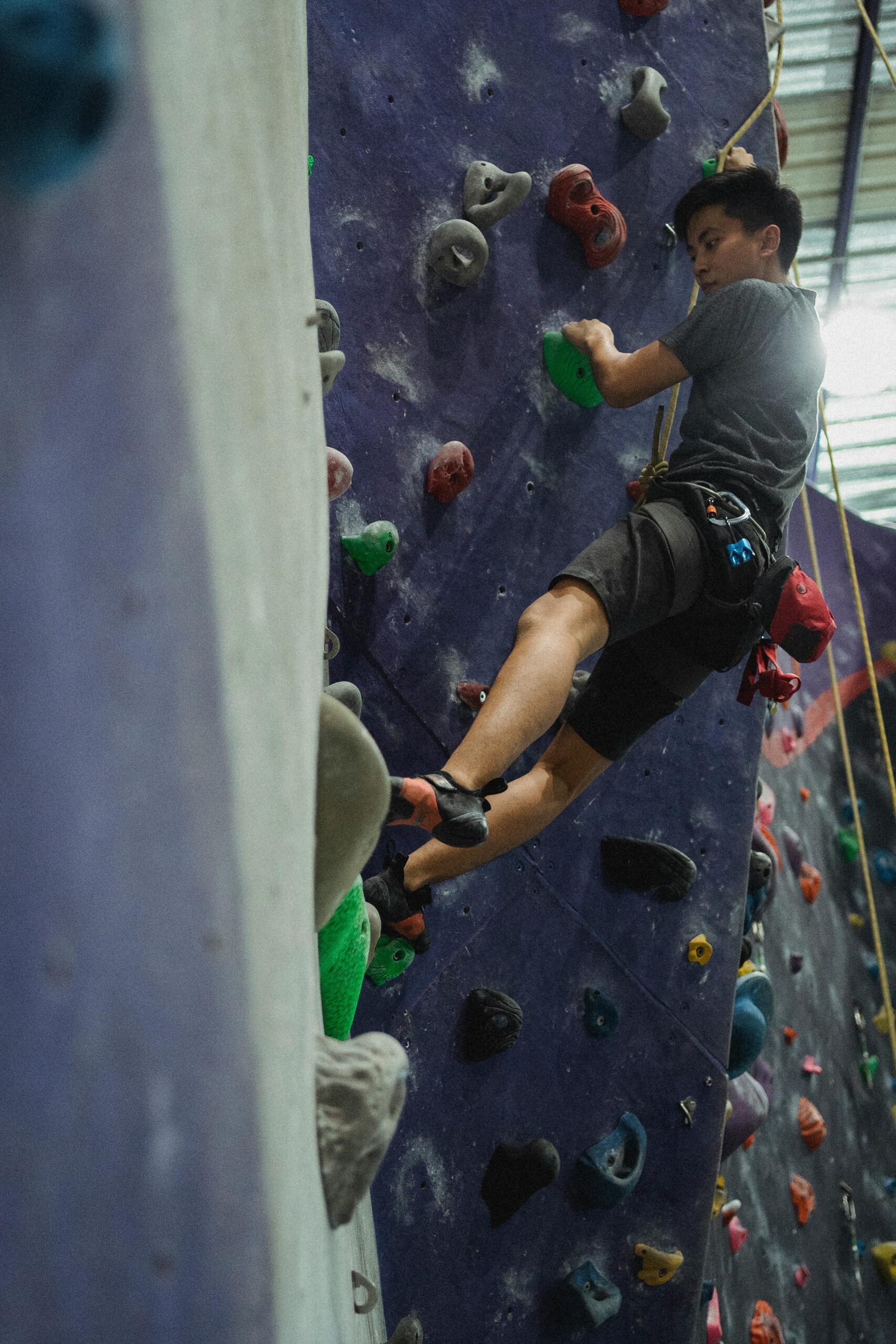Embarking on the thrilling adventure of indoor climbing opens up a world of physical challenges, mental focus, and exhilarating achievements. Whether you’re drawn to the idea of conquering towering walls or simply seeking a new way to stay active, indoor climbing offers an accessible and rewarding journey for beginners. In this comprehensive guide, we’ll walk you through everything you need to know to get started with indoor climbing, from essential gear to basic techniques and safety tips.
What is Indoor Climbing?
Indoor climbing, also known as rock climbing in an indoor setting, involves scaling artificial climbing walls using specialized equipment. Climbers navigate routes of varying difficulty, testing their strength, agility, and problem-solving skills as they ascend.
Benefits of Indoor Climbing:
- Full-Body Workout: Climbing engages muscles throughout the body, from the arms and shoulders to the core and legs, making it an excellent total-body workout.
- Mental Focus: Climbers must strategize and plan their ascent, requiring mental focus, problem-solving skills, and the ability to overcome challenges.
- Improved Flexibility and Coordination: Climbing promotes flexibility as you navigate different holds and positions. It also enhances coordination and balance.
- Community and Support: Indoor climbing gyms often have a welcoming and supportive community of climbers, making it a social and engaging activity.
Getting Started: Essential Gear
1. Climbing Shoes:
Climbing shoes are specially designed to provide grip and support on the climbing wall. They should fit snugly without being uncomfortably tight.
2. Chalk and Chalk Bag:
Chalk helps keep your hands dry and provides better grip on the holds. A chalk bag attaches to your harness for easy access.
3. Harness:
A climbing harness is essential for safety, as it attaches you to the rope. Make sure to choose one that fits comfortably and securely.
4. Belay Device:
For top-rope climbing, you’ll need a belay device to control the rope as your climbing partner belays you from the ground.
5. Climbing Rope (For Top-Rope Climbing):
If you’re participating in top-rope climbing, the climbing gym will provide ropes. However, if you plan to climb outdoors, you’ll need your own rope.
Basic Techniques for Beginners:
1. Footwork:
Focus on using your feet to support your weight and push yourself up the wall. Place your feet deliberately on the holds and avoid relying solely on your arms.
2. Handholds and Grips:
Learn the different types of handholds, such as jugs (large, easy-to-grip holds) and crimps (smaller, more challenging holds). Experiment with different grip techniques, including open hand, crimp, and pinch grips.
3. Body Positioning:
Keep your body close to the wall to maximize your reach and stability. Use your legs to push yourself up rather than pulling with your arms.
4. Resting and Pacing:
Take breaks when needed to shake out your arms and regain strength. Pace yourself and focus on breathing steadily to conserve energy.
Safety First: Tips for a Safe Climb
1. Always Check Your Gear:
Before each climb, inspect your harness, knots, belay device, and climbing shoes for any signs of wear or damage.
2. Communicate with Your Partner:
If you’re climbing with a partner, establish clear communication signals and double-check each other’s equipment before starting.
3. Learn Proper Belaying Techniques:
If you’re belaying for a partner, make sure to learn and practice proper belaying techniques. This includes paying attention, providing a secure belay, and communicating effectively.
4. Follow Gym Rules and Guidelines:
Each climbing gym may have specific rules and guidelines for safety. Familiarize yourself with these rules and always follow the gym’s procedures.
Climbing Etiquette: Being a Respectful Climber
1. Wait Your Turn:
Be courteous and patient, especially during busy times at the gym. Wait for the climber ahead of you to finish their route before starting yours.
2. Keep the Noise Down:
Indoor climbing gyms can get noisy with chatter and music. Keep noise levels respectful of others trying to focus on their climbs.
3. Clean Up After Yourself:
Pick up any chalk bags, water bottles, or gear you’ve used and return them to their proper places. Leave the climbing area clean for the next climbers.
Your First Climb: What to Expect
- Warm-Up: Begin with a gentle warm-up to get your muscles ready for climbing. This might include stretching, light jogging, or easy traversing on the wall.
- Start Easy: Choose beginner-friendly routes marked with lower difficulty ratings (often indicated by colors).
- Take Breaks: Don’t feel pressured to climb continuously. Take breaks between climbs to rest, hydrate, and observe other climbers.
- Celebrate Progress: Every climb, no matter how small, is an achievement. Celebrate your progress and don’t be discouraged by challenges.
Conclusion: Embracing the Climb
Embarking on your indoor climbing journey is an exhilarating and rewarding experience. From the physical challenges to the mental focus required, climbing offers a unique opportunity to push your limits and discover new strengths within yourself.
As you step onto the climbing wall for the first time, remember to stay patient, stay focused, and most importantly, have fun. Whether you’re conquering challenging routes or enjoying the camaraderie of fellow climbers, indoor climbing promises endless opportunities for growth and adventure.
So, lace up your climbing shoes, chalk up your hands, and get ready to scale new heights. With this beginner’s guide to indoor climbing, you’re well-equipped to embark on a thrilling journey of sweat, smiles, and triumphs. Here’s to the joy of climbing, one exhilarating ascent at a time!

